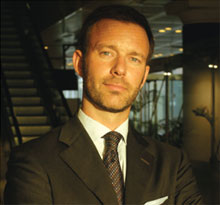By Olivier Jankovec, Director General, ACI EUROPE
 As 2008 draws to a close, the forthcoming year is looking pretty bleak for airlines and airports alike. As European countries have been injecting billions of euros in their faltering banking systems in the hope of calming down financial markets and preventing the collapse of their economies, an increasing number of European airports have reported falling passenger and freight traffic figures over the last months. Although uncertainty is the order of the day and making accurate traffic forecasts is like reading a crystal ball, the magnitude of this economic crisis means that the downward trend will further accelerate in the coming months. Let’s face it, 2009 is set to be some sort annus horribilis for aviation.
As 2008 draws to a close, the forthcoming year is looking pretty bleak for airlines and airports alike. As European countries have been injecting billions of euros in their faltering banking systems in the hope of calming down financial markets and preventing the collapse of their economies, an increasing number of European airports have reported falling passenger and freight traffic figures over the last months. Although uncertainty is the order of the day and making accurate traffic forecasts is like reading a crystal ball, the magnitude of this economic crisis means that the downward trend will further accelerate in the coming months. Let’s face it, 2009 is set to be some sort annus horribilis for aviation.
Focusing on how to weather such turbulent times, airports managers need to address the combined effect of fewer flights and less passengers, against a background of unprecedented costs for utilities and security. As a result, airports across Europe are tightening their belts, looking at every way to increase the efficiency of their facilities and, whenever possible, keeping charges paid by the airlines stable, or even lowering them. But at the same time, when facing a crisis like the current one, airports cannot afford to adopt a short-term, short-sighted perspective. The very nature and structure of their business obliges them to continue looking at the long-term. This means that while some investments and related capital expenditure programmes may be postponed or even abandoned, others need to be pursued.
In this regard, the study released last month by EUROCONTROL on the Challenges of Growth for European aviation provides a stark reminder that Europe continues to face an airport capacity crunch. Notwithstanding the difficult times we are going through, air traffic will double by 2030. If airports are not in a condition to plan, finance and deliver more airport capacity, European aviation is set for very unpleasant times, with congestion and delays skyrocketing through the network. The stakes are high indeed, as beyond the success of the Single European Sky, such a situation would involve significant economic and environmental costs, impacting not only the aviation sector, but also Europe’s competitive position. Ultimately, in a liberalised aviation market like ours, the vital role that airports play in bringing airline price and service competition to their communities depends on their ability to develop their facilities.
Just like its member airports, ACI EUROPE is looking both at short-term and long-term challenges, with the objective of making a positive and influential contribution to the European aviation system. This is what the cooperation agreement that we have just concluded with EUROCONTROL is about. This is also why we intend to play a key role in the newly established EU Observatory on airport capacity. The Airport Carbon Accreditation Scheme that we are currently developing follows the same rationale. By building on our industry commitment to the greening of airports through the reduction of carbon emissions and a vision pointing towards carbon neutrality, it shows that airports are ahead of the curve on environmental efficiency. While we are reporting on these initiatives in what is simultaneously the last 2008 and first 2009 issue of Airport Business, there is possibly no better time for a lead interview with Antonio Tajani, Vice President of the European Commission in charge of Transport – the man piloting European Aviation Policy through the growing clouds of the new year.







